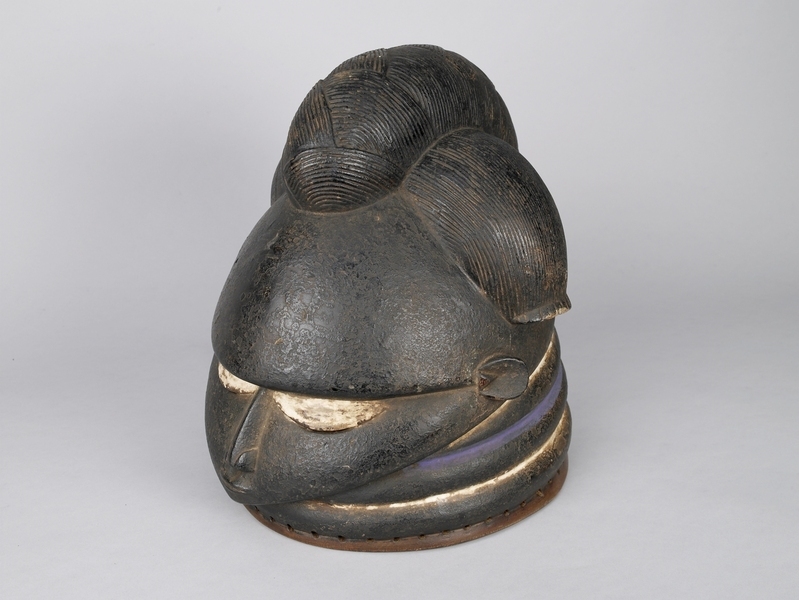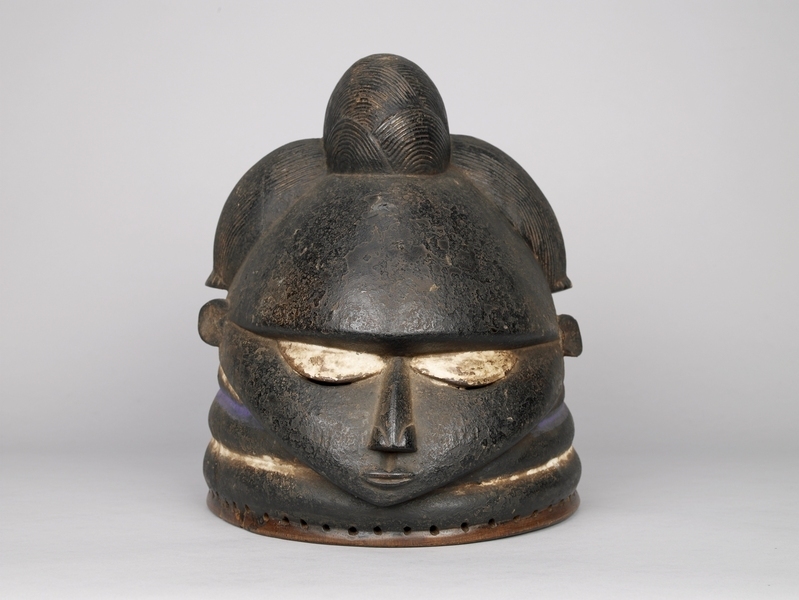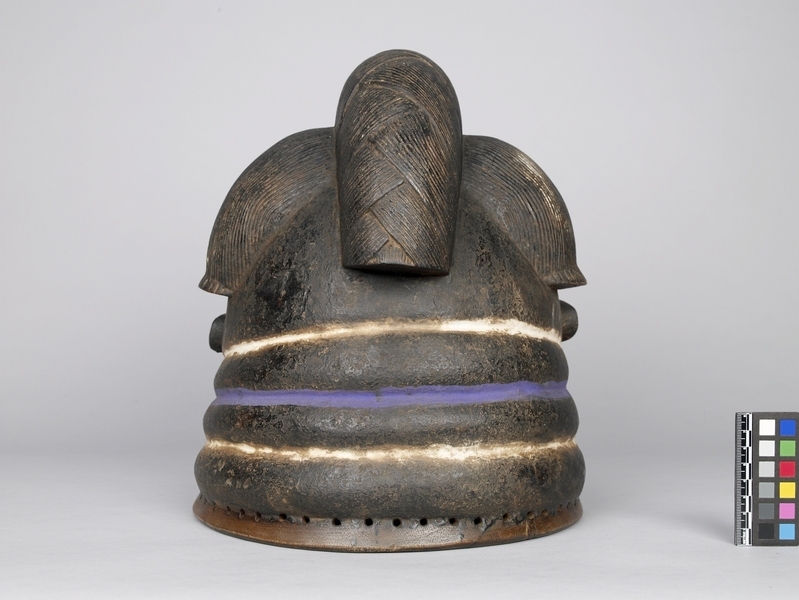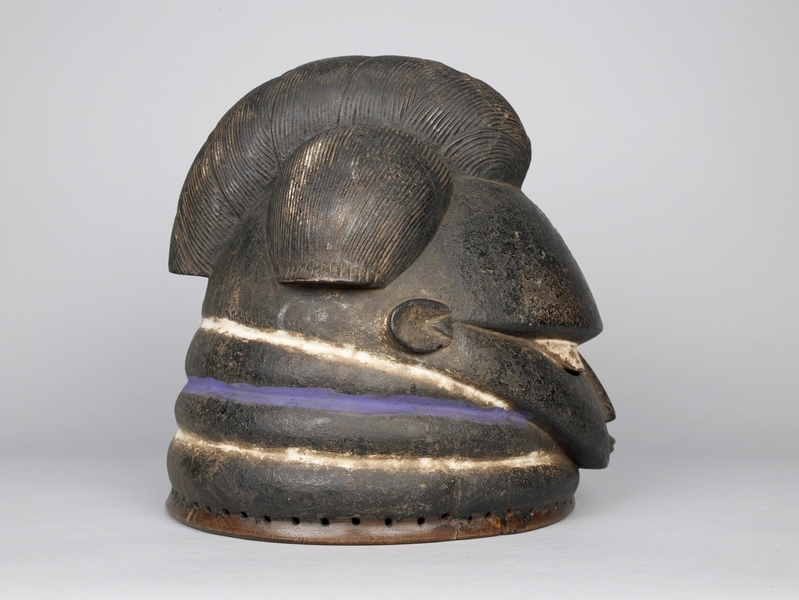Helmet Mask Item Number: 2709/2 from the MOA: University of British Columbia





Description
Round, carved wooden helmet mask. The top has a large centre roll, with small rolls on each side. The lower front has a triangular shaped face, with white half circles for eyes and a thin protruding nose. Around the neck area is a ring of blue pigment, flanked by rings of white pigment. The bottom rim has a ring of holes.
History Of Use
The sowei, or bundu, mask is made by men but worn as a dance mask by women in the Sande women's society, during girls' initiation camps. There they are prepared for marriage, trained in both domestic and economic pursuits and in singing and dancing. The masked dancers visit the camps to remind the girls of the ideals of female beauty and virtue. When the girls leave, they are considered to be women ready for marriage. During a dance, the mask is worn by a "ndoli jowei" performer, with a full costume concealing the dancer's identity.
Item History
- Made in Sierra Leone
- Owned by Richard Tchuemegne before July 24, 2008
- Received from Richard Tchuemegne (Seller) and Museum of Anthropology Acquisitions Budget (Funding source) on July 24, 2008
What
Who
- Culture
- Mende
- Previous Owner
- Richard Tchuemegne
- Received from
- Richard Tchuemegne (Seller) and Museum of Anthropology Acquisitions Budget (Funding source)
Where
- Holding Institution
- MOA: University of British Columbia
- Made in
- Sierra Leone
When
- Ownership Date
- before July 24, 2008
- Acquisition Date
- on July 24, 2008
Other
- Condition
- good
- Current Location
- Case 98
- Accession Number
- 2709/0002